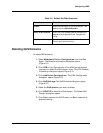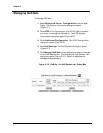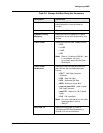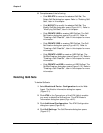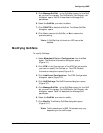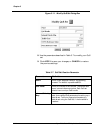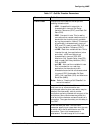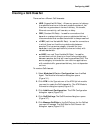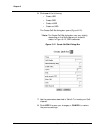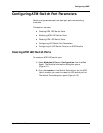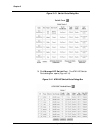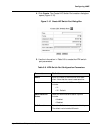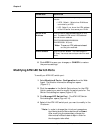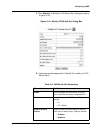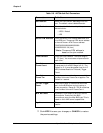
Cajun P550/P880 ATM Uplink User Guide, Version 1.1
Configuring LANE
3-23
Creating a QoS Class Set
There are four different QoS class sets:
■ UBR (Unspecified Bit Rate) - Allows any amount of data up
to a specified maximum to be sent across the network, but
there are no guarantees in terms of delivery, file transfer,
Ethernet connectivity, cell loss rate, or delay.
■ CBR (Constant Bit Rate) - Is used for connections that
depend on precise clocking to ensure undistorted delivery. I
is recommended that constant bandwidth is always reserved.
■ rtVBR (real time Variable Bit Rate) - Is used for connections
in which there is a fixed timing relationship between
samples. This is a service category intended for time
dependent, real-time applications (voice and video) with
variable bandwidth.
■ nrtVBR (non-real Time Variable Bit Rate) - Is used for
connections in which there is no fixed timing relationship
between samples, but that still need a guaranteed QoS. This
service category is intended for non-real-time applications
with variable traffic, guaranteed delivery, but not dependen
on time.
To create a QoS class set:
1. Select Modules & Ports > Configuration from the Web
Agent. The Module Information dialog box opens
(Figure 3-1).
2. Click ATM in the Type column of the ATM Uplink module
you want to create the QoS class set for. The ATM Module
Information dialog box opens (Figure 3-2).
3. Click Additional Configuration. The ATM Configuration
dialog box opens (Figure 3-3).
4. Click QoS Settings. The QoS Domains dialog box opens
(Figure 3-7).
5. Click Manage QoS Sets in the QoS Column for the QoS set
you want to manage. The QoS Sets for QoS Domain <#>
dialog box opens (Figure 3-10).



